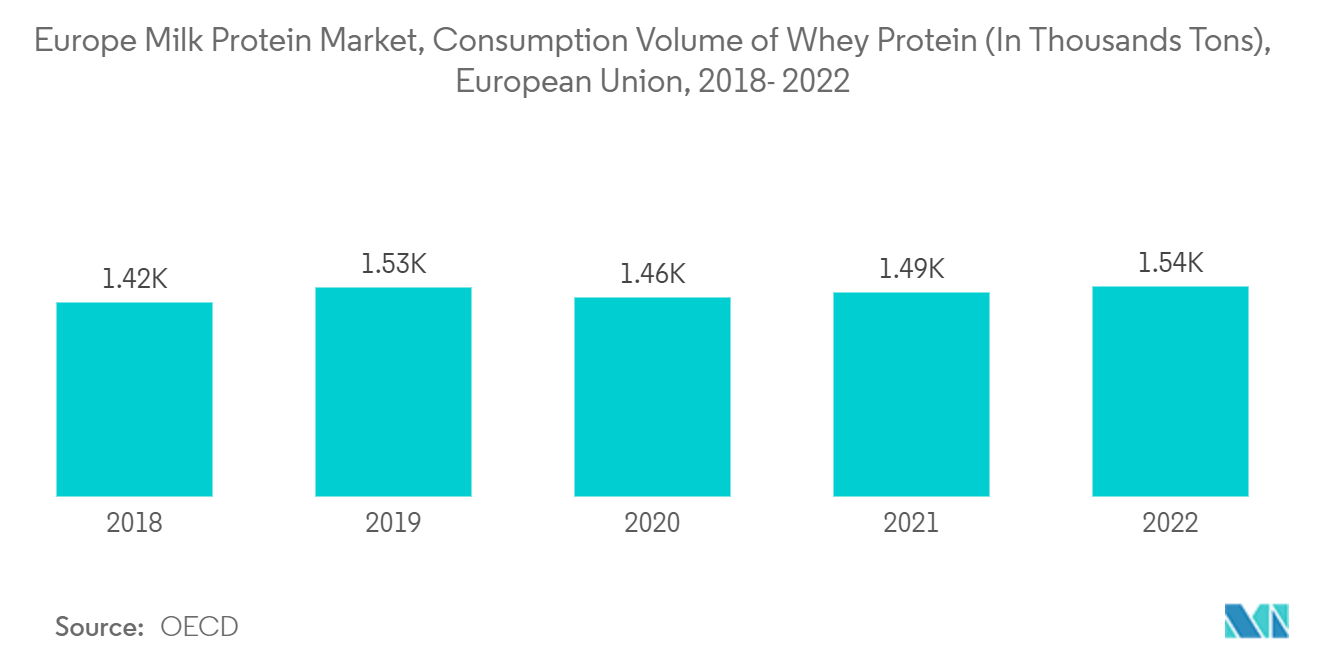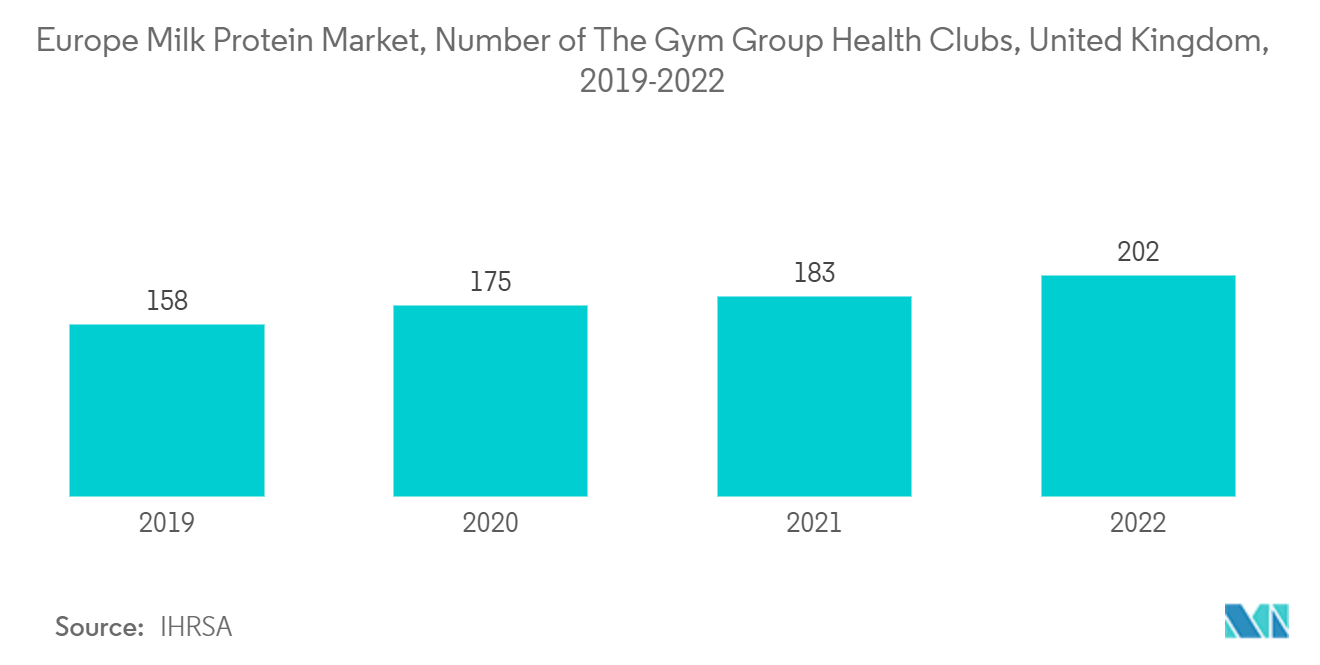Market Trends of Europe Milk Protein Industry
Rising Demand for functional Food Drives the Market
- Innovation in the dairy sector, particularly in the milk protein market, has been sparked by the rising demand for functional food. Customers are searching for goods that give not only needed nutrition but also certain health advantages, including immune support, weight management, and recovery of muscles. Whey and casein, two milk proteins with high protein content and a variety of useful characteristics, are extremely valuable. Consumption and production of protein products are rising in the region.
- For instance, protein meal production volume in the European Union was 28,718.55 thousand tons in 2022, according to the Organisation for Economic Co-operation and Development (OECD). They are included in a variety of functional food items, including protein-fortified drinks, sports nutrition, meal replacements, and nutritional supplements.
- Furthermore, protein supplements are currently used extensively due to rising healthcare awareness among the public and worries about obesity. Customers are shifting their focus on eating nutritious foods and increasing their protein intake to get extra benefits from protein supplements created with milk protein, which in turn is fueling the increase of milk protein.
- The emergence of functional foods has given dairy companies new opportunities to design and promote products that meet the needs of health-conscious customers looking for convenient methods to enhance their well-being.
- As the demand for nutrient-dense foods using milk concentrates rises, producers of milk protein concentrate components are heavily investing in research and development. A new generation of milk protein concentrates with an improved flavor and nutrient profile is being developed.

United Kingdom Holds the Largest Market Share
- Milk protein is being used more frequently in the food and beverage industry's wide range of goods, such as infant formula, functional foods, and sports nutrition. The market has benefited from government initiatives to provide food security and nutritional needs, as well as from regulations that assist the dairy industry.
- The trend towards nutrient-dense and healthful diets, rising health awareness, and more research and development to enhance the functionality, scent, and flavor of dairy protein ingredients are all expected to contribute to the growth of the milk protein market in the United Kingdom over the coming years. The market is also anticipated to be driven in the coming years by an increase in the number of births and an increase in protein consumption to gain additional nutrients from protein supplements. For instance, there were 605,479 live births in England and Wales in 2022, according to the Office for National Statistics.
- The expansion of the sports nutrition and fitness industries has raised demand among athletes and fitness fans for milk protein supplements. Sports nutrition consumption is rapidly increasing as sports participation has increased. For instance, in 2022, the number of professional sports players in the United Kingdom was 12.9 thousand, according to the Office for National Statistics (UK), which has increased market demand.
- As one of the largest gluten-free consumers in the region, the United Kingdom remains a promising destination for milk protein consumption, owing to the ingredient's high efficacy in gluten-free formulations. Also, the whey protein demand in the country is majorly led by an increasing number of fitness enthusiasts and a heavy consumer influx in gyms and fitness clubs. The number of health clubs in the United Kingdom was 202 in 2022, according to the International Health, Racquet & Sportsclub Association (IHRSA).


